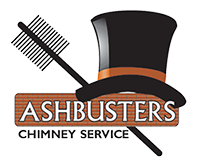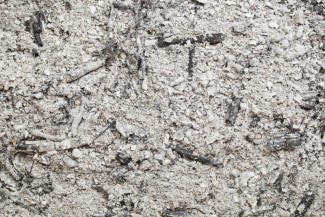After each wood or pellet-fueled fire, you will be left with ashes and ash residue left behind for you to remove. If you do not know the proper ash removal procedures, you could be in danger of a fire caused by the hot coals hidden within the ashes. At Ashbusters, fireplace and chimney safety is one of our highest priorities as CSIA-certified chimney sweeps, so we thought we would share with you some answers to questions on removing ashes correctly to protect you from the possibility of any fire hazards.
How Does Improper Ash Removal Lead to a Fire?
Quite often, people mistakenly think that simply storing ashes in a metal bucket with no lid is the proper way to remove ashes. However, when this unlidded bucket is sitting outside on your porch, winds can easily blow the bucket over. This would cause all of the ashes to fall out onto your porch or yard. If this were to occur, the ashes would get stirred up, which could reactivate the hot coals. If your porch has a wooden floor, you could have a dangerous porch fire on your hands caused by improper ash removal. Similarly, if the hot ashes end up in your yard, you might have to deal with an out-of-control brushfire.
What Is the Best Type of Container to Use to Store Ashes?
The importance of using a proper ash container cannot be stressed enough. Ashbusters strongly recommends using a pail or bucket made of sheet metal that has a securely fitted lid. The lid is the most essential key for safety. For an even safer ash container, the bottom of the pail should be slightly offset so that the actual bottom will not make contact with flooring and possibly char the surface.
Where Is the Best Place to Store My Ash Bucket?
Never place your bucket on a wooden floor as this can be a fire hazard even if the bucket has an elevated bottom. Always store your ash bucket outside on a non-combustible surface such as stone, brick, concrete, or slate. Also, ensure that the lid is securely closed.
Do I Need to Remove Ashes After Every Fire?
According to the Chimney Safety Institute of America (CSIA), you do not have to remove ashes every time you have had a fire. In fact, leaving a one-inch layer of ash on the floor of your firebox can make it much easier to build and maintain a fire. The hot coals within the ashes will add more heat to the fuel and reflect this heat back into the fire. A thin layer of ash also protects the floor of your firebox. However, you should never allow this layer of ashes to get too deep, If these ashes make contact with the bottom of your grate, it can cause the grate to burn out prematurely.
What If I Have a Wood-Burning Stove or a Pellet Stove? Should I Remove and Store These Ashes Differently?
The storage procedures are still the same for these stoves. If your stove is long and narrow and burns from the front to the back, it will benefit from removing the ashes that are just inside the door. Then, you can move the hot coals to the back of the stove to aid in the quick ignition of a fire. The incoming air from combustion will reignite those hot coals and rapidly heat up the entire firebox. If all of the ashes are removed, it will be difficult to start a fire because all of the bricks in the firebox must be heated to saturation before your fire can really get going.
If you have any questions about how to remove and store ashes properly, contact Ashbusters to ask our staff. We are always happy to help you with all fire safety issues.

